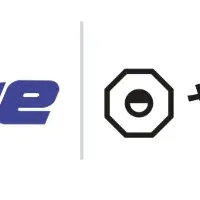
Growing Atomic Force Microscopy Market Forecasted to Surpass $762 Million by 2030
The Expanding Atomic Force Microscopy Market
The atomic force microscopy (AFM) market is on the rise, with expectations to reach $762.2 million by 2030, growing from $541.8 million in 2025. This growth reflects a compound annual growth rate (CAGR) of 7.1% during this period. The advancement in technology and the broadening scope of nanoscale research across numerous sectors is largely propelling this trend.
Driving Forces Behind Market Growth
Several factors are contributing to the robust growth of the AFM market. Notably, there is a significant trend toward integrating AFMs with advanced imaging and data analysis software. This upgrade is enhancing precision and enabling more detailed surface characterization in various industries, including semiconductors, materials science, and biotechnology.
The movement towards high-resolution and non-destructive testing methodologies is also accelerating the adoption of AFMs. This is particularly crucial in quality control and failure analysis processes, where rapid and reliable results are necessary.
Moreover, the incorporation of automation, artificial intelligence, and machine learning algorithms into AFM systems is enhancing their usability and throughput, making the technology more accessible even for non-specialists.
The Role of Software in AFM
Software is emerging as a key player in the AFM landscape, reflecting a broader digital transformation within nanotechnology research and precision manufacturing. The role of software has expanded to boost efficiency, functionality, and ease of use for AFM systems. Specifically, advanced control software now facilitates automated tip engagement, scan optimization, and adaptive feedback mechanisms, significantly reducing the necessity for manual operations and enhancing reproducibility.
Batch analysis and data stitching functionalities are increasingly vital as AFM is applied in high-throughput scenarios, such as semiconductor inspections and biomedical research. The integration of AI and machine learning further improves AFM operations by enabling predictive maintenance and defect classification.
Dominant Market Segments
Among the various segments, the semiconductor and electronics markets are projected to experience the most significant growth. This is largely driven by the increasing complexity and miniaturization of electronic components. As semiconductor nodes decrease in size and new technologies such as 3D ICs and chiplets gain traction, having high-resolution, non-destructive surface analysis tools becomes essential.
Additionally, the rising demand for high-performance computing, artificial intelligence, and 5G-compatible devices is bolstering the need for advanced metrology tools in both research and mass production scenarios. The investment from both government and private sectors in semiconductor manufacturing across regions like Asia Pacific, North America, and Europe is further supporting this growth.
Regional Insights
In 2024, Europe held the second-largest market share in atomic force microscopy, benefiting from a strong industrial foundation and established research ecosystems. Many European countries are home to prestigious universities and research institutions engaged in nanotechnology and materials science, pivotal areas for AFM applications. Furthermore, programs such as the European Commission's Horizon Europe are allocating significant funding to further propelling nanotechnology research across the continent.
Several notable AFM manufacturers are based in Europe, including Oxford Instruments (UK), Nanosurf (Switzerland), and Anton Paar GmbH (Austria). Their presence strengthens the local supply chain and enhances collaboration between academia and industry in the region.
Key Players in the Market
Major companies in the AFM sector include Park Systems (South Korea), Bruker (US), Hitachi High-Tech Corporation (Japan), Oxford Instruments (UK), and Semilab Inc. (Hungary). These organizations are continuously innovating and adapting to market demands to maintain their competitive edge.
Conclusion
The atomic force microscopy market stands at a pivotal moment, with significant growth opportunities emerging across various sectors. As technology continues to advance and applications broaden, AFMs are likely to see increased utilization, further solidifying their role in the future of scientific research and industrial applications.
Topics Consumer Technology)










【About Using Articles】
You can freely use the title and article content by linking to the page where the article is posted.
※ Images cannot be used.
【About Links】
Links are free to use.